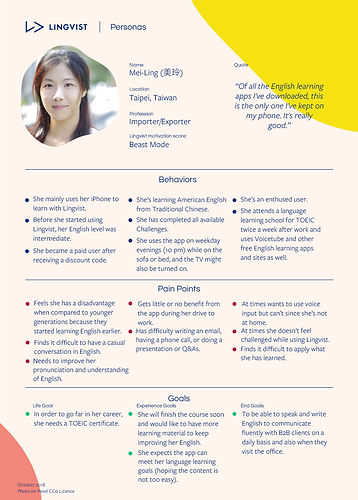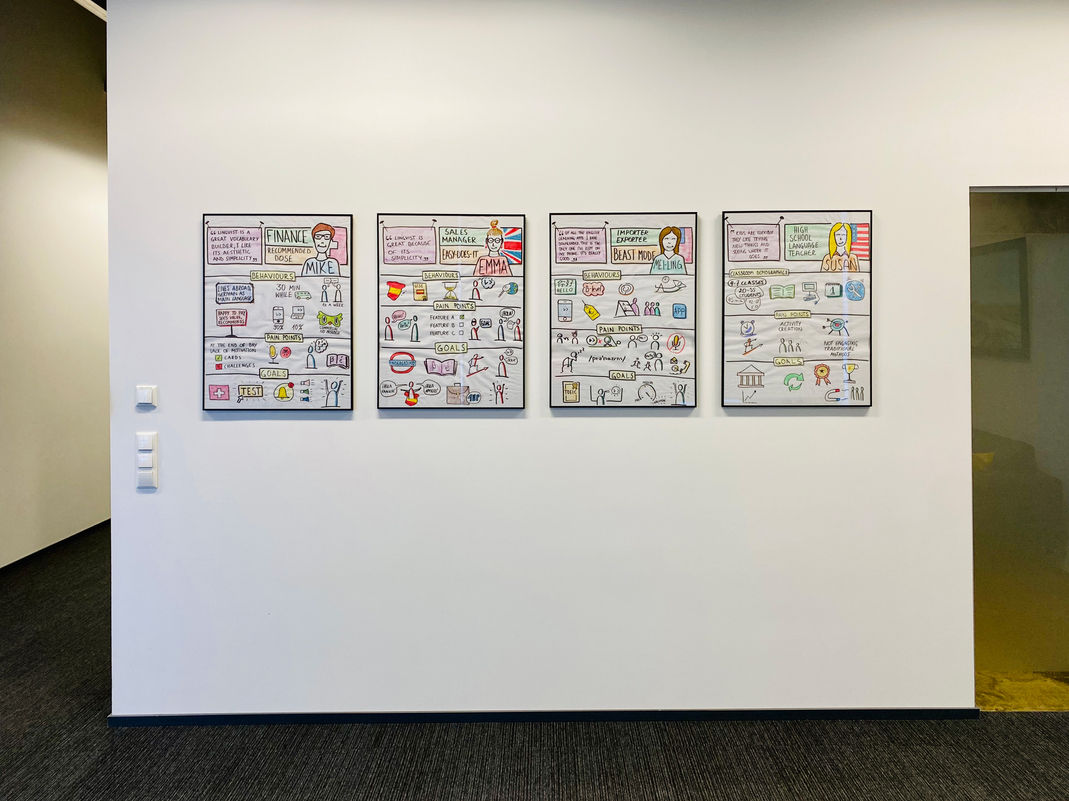Lingvist user personas
One of the most crucial roles a UX design team plays in a company is that of creating a sound and well research understanding of our users are. This creates an internal empathy for users that guides company objectives and product vision, user personas are a key to this process.
ROLE:
In-house lead designer managing the design chapter for Lingvist, a language learning application.



The Problem
The company needs a unified, global view of who Lingvist is for.
After a period of rapid growth within a very short span of time, diversifying in terms of product features and expanding into new markets, the rudimentary personas created 2 years prior were no longer fit for purpose.
THE PROCESS
Understanding the status quo
After gathering and analysing all previously compiled data, the next step was to have structured yet casual discussions with team members from across the company (developers, marketing professionals and even the CEO) to get their opinion of who a Lingvist user is.
Gathering statistical data
To better understand any demographic trends, the team started compiling data from existing statistical data from sources. These included Google Analytics, interaction with social media channels, and other in-house channels.


Talking to real people
The team set up a survey to gather more qualitative information which in turn led to a host of user interviews. The key focus here was on getting a better understanding of who the users are, their behaviour, what was their main goal, and what was the main barrier that kept them from achieving it.
Collating findings
By the time the research was concluded, patterns started to emerge in both the quantitative and qualitative data. An analysis template was used to reduce internal bias and draw conclusions towards more genuine and accurate final personas.
The Outcome
We landed on four personas, two of which we considered primary end-users — the dedicated English-speaking ex-pat and the career-focused English learner — and two that are influential yet less common user types — the language teacher and the casual hobbyist.
A highly rewarding outcome of this project was that it gave two interns involved ad an opportunity to learn and grow, whilst adding a tangible research example to their portfolio. A key shortcoming, however, was that despite involving team members from across the company early on and conducting a workshop once the results where attained, it proved difficult to get company-wide buy-in on the newly created personas.
The primary personas highlighted that key Lingvist learners (and ergo, its key market) were based on highly dedicated learners seeking to improve their quality of life. These findings helped prompt the company to focus heavily in the DACH (Germany, Austria and Switzerland) regions as well as Asian markets.
